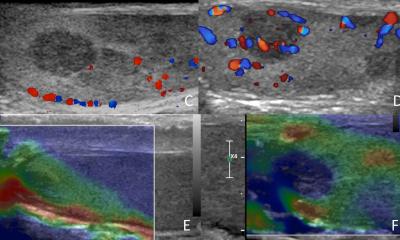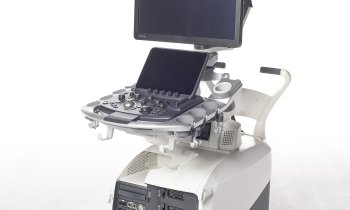The breast ultrasound Champion League
Since 1991 the International Breast Ultrasound School (IBUS) has indefatigably promoted progress and quality assurance in breast ultrasound -- a good reason for IBUS to celebrate its 20th anniversary during WFUMB.

For visitors to Vienna’s Austria Centre this Friday event will offer a special opportunity to meet the international crème de la crème in breast ultrasound. These are members of the BI-RADS Committee of the American College of Radiology, which advises governments on national screening programmes for the early detection of breast cancer; they are also those who conduct innovative research – the faculty members of IBUS, an NGO headquartered in Switzerland. If they were European soccer teams they‘d play Champions League, the elite division to which only a country’s top teams are admitted.
Elite they may be, elitist they are not – freely sharing their knowledge with novice and expert alike, be it at the annual programme at the University of Ferrara in Italy or at international congresses such as WFUMB. ‘We focus on practical training – at the World Ultrasound Congress and anywhere else’, says Professor Alexander Mundinger MD, President of IBUS and Chair of the Subcommittee Breast at WFUMB 2011. ‘We will be offering hands-on training where participants learn on a model how to perform a standardised examination and biopsy. In the Advanced Imaging Courses we’ll discuss current issues of breast ultrasound.
‘Panellists from eight different countries, among them renowned experts such as Professor Per Skaane MD of Oslo University in Norway, or Professor Ellen B Mendelson MD, from Northwestern University in Chicago, will talk about cross-modality breast diagnostics and radio frequency technologies. And Professor Ken Ueno MD, our colleague from the University of Tsukuba, will share exciting insight into the world of elastography.’
In the 20 years since the foundation of IBUS in Zurich ultrasound has come a long way, Professor Mundinger points out. Due to its excellent resolution in the near field with high frequencies of up to 18 MHz modern ultrasound has become an important modality in breast diagnostics and in certain contexts is considered equal to mammography.
‘Each imaging modality is based on a different physical principle. Ultrasound is like spoken language, albeit in a higher frequency, while X-ray works with light. Because not all information is accessible with ears and eyes in breast diagnostics, we have to use all our senses to obtain the complete picture. ‘One of the IBUS current great hopes is Austria. It is the first country worldwide to be planning to include ultrasound as a complementary modality for radiopaque breasts with ACR density of three and four in its future national mammography screening programme.
An expert commission, including IBUS advisors, is supporting the decision-making process of the Austrian Health Ministry and the Austrian physicians‘association. Detailed research, such as the ACRIN study published in 2008 by Wendie Berg MD, as well as other studies by Professor Christian Weismann MD and Professor Wolfgang Buchberger MD, showed that the combination of ultrasound and mammography can increase the cancer detection rate by four women per 1,000 screened.
‘Usually both procedures are performed in Austria already – that’s unique,’ Professor Mundinger points out. ‘That’s because Austrian radiologists are excellently trained, have very good equipment and they agreed to perform both examinations for a very small fee. In addition, Austria has more radiologists per inhabitant than many other countries. Since ultrasound is a highly personnel-intensive technology, these are important preconditions that must be met to be able to integrate sonography widely into the screening programme.’
So, if the complementary approach in breast cancer screening indeed becomes reality, it is the IBUS members who have contributed significantly to that decision.
"Breast ultrasound- update", Friday, August 26, 15:30-17:00, Hall NO
25.08.2011










